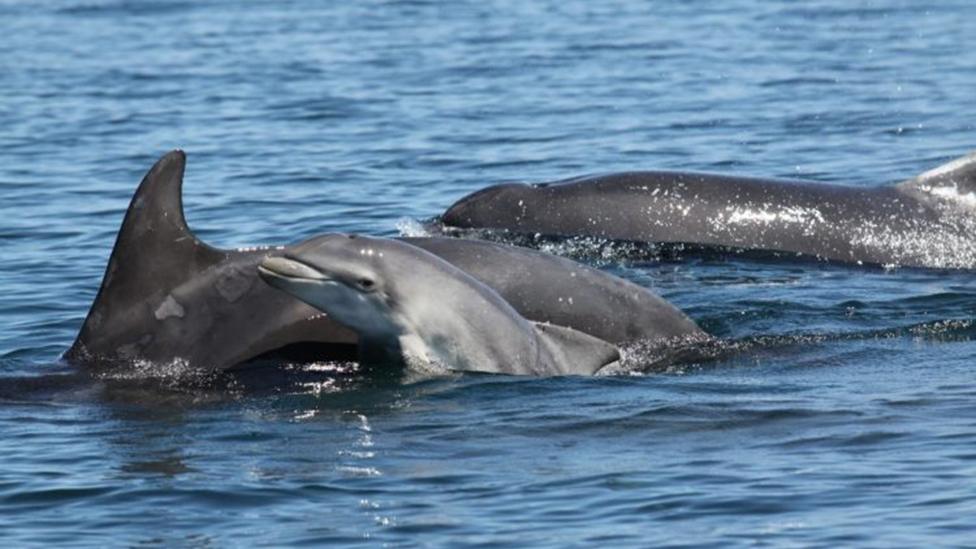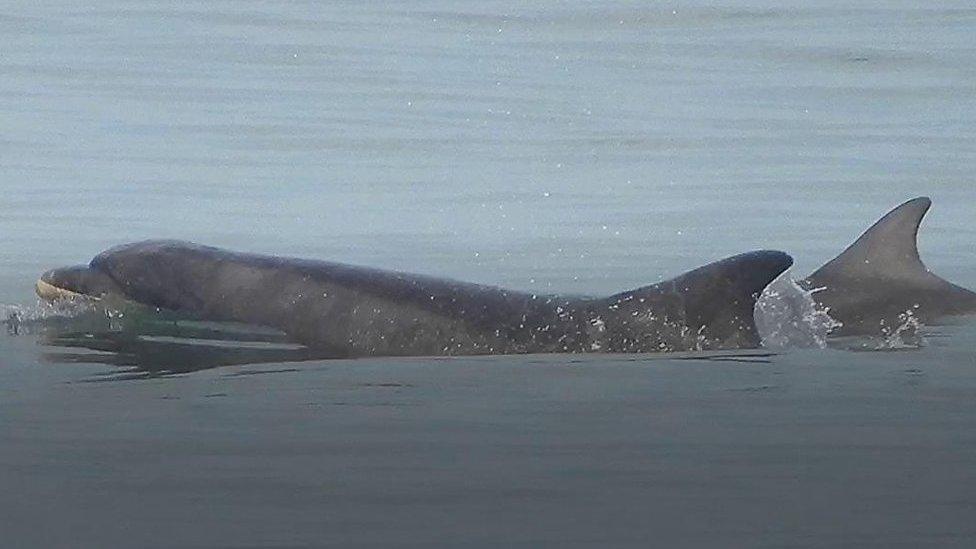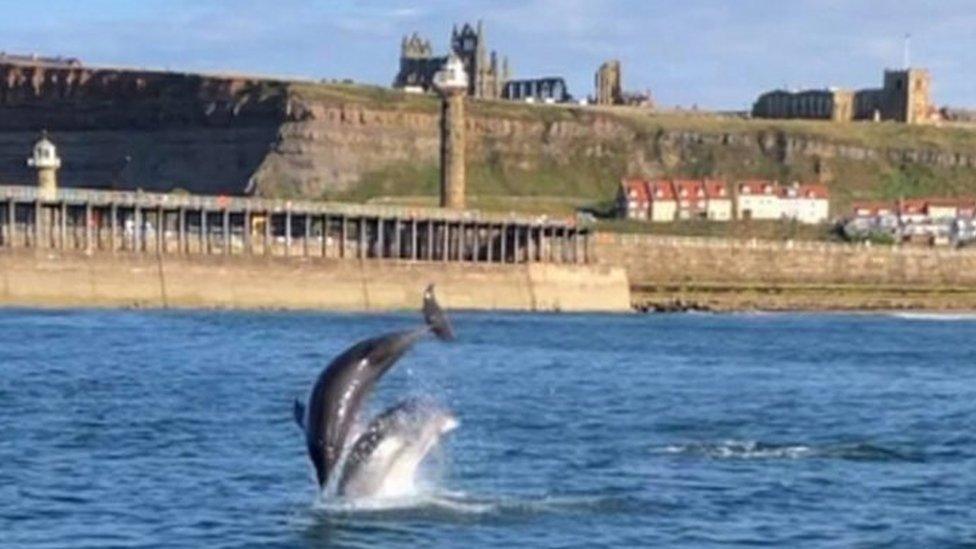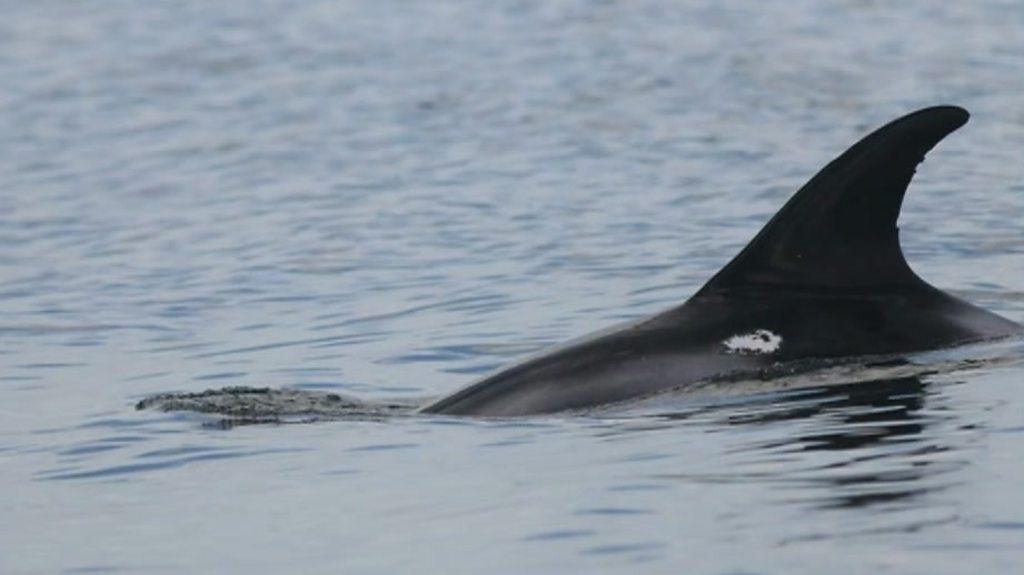Public to help scientists ID Yorkshire bottlenose dolphins
- Published

Pods of bottlenose dolphins have been spotted of Flamborough Head in East Yorkshire
Wildlife watchers are being asked to help scientists understand why bottlenose dolphins are appearing more frequently along the Yorkshire coast.
The animals are usually found in waters around northern Scotland but groups are now being spotted further south.
Researchers at the University of St Andrews want people to send them photographs of any sightings.
The images are used to identify individual dolphins by the notches and other marks on their dorsal fins.
Dr Mònica Arso Civil, from St Andrews, said the university had built up a "fin catalogue" of the dolphins.
"We have been monitoring this population of bottlenose dolphins for 30 years now, which has allowed us to follow individuals, sometimes from birth, as they have gone on to raise their own young," she said.
"Some of these well-known individuals have been repeatedly seen in areas along the English coast over the last few years."

One of the dolphins seen off Flamborough Head was identified as a female called Guinness
One person who submitted a photograph to the Citizen Fin website is East Yorkshire naturalist Craig Thomas, who spotted a pod of about 20 somersaulting dolphins passing Flamborough Head.
"I've been monitoring sea bird passage on the Yorkshire coast for 40 years and for the first 20 of those years I never saw a bottlenose dolphin," he said.
"But over the last three years every early spring we start to see a pod of bottlenose dolphins."
After Mr Thomas uploaded his pictures to the website researchers identified one of the dolphins as a female known as Guinness, who was first photographed off the Scottish coast in 1989.
Dr Arso Civil said it was still unclear why the dolphins were swimming so far south.
"These animals are seen foraging, looking for food in different areas," she said.
"So [maybe] it's because they've found nice areas where they can find food and so they're spending more and more time there."

Follow BBC East Yorkshire and Lincolnshire on Facebook, external, Twitter, external, and Instagram, external. Send your story ideas to yorkslincs.news@bbc.co.uk, external.
Related topics
- Published11 May 2020

- Published10 August 2019

- Published8 August 2018
